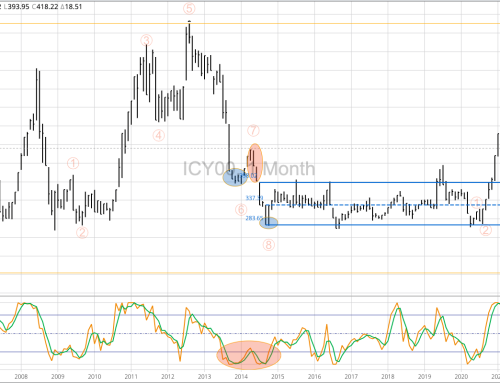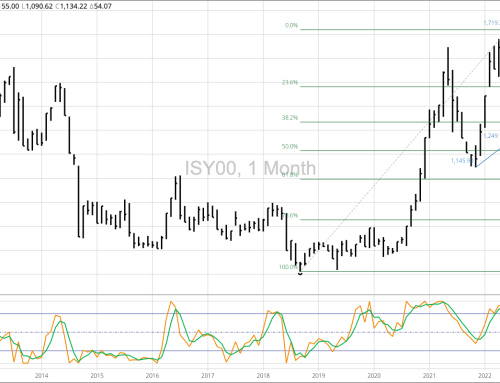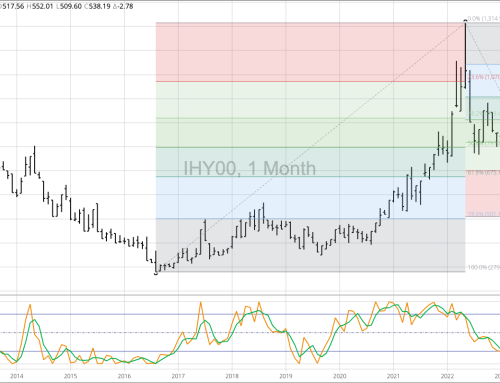If I were old version of Watson; a cold, unfeeling computer algorithm only concerned with technical patterns I see on nameless charts, my conclusion for this monthly look at the cmdty National Corn Price Index (NCPI, weighted national average cash price) would still be a major (long-term) downtrend is in effect. After posting a high of $7.4931 during May 2021, the NCPI closed the month at $6.7121, down 18.17 from the April settlement. This created a classic spike reversal that confirmed a previous bearish crossover by monthly stochastics above 90% and coincided with a secondary bearish crossover at the end of May (for further discussion, see Monthly Analysis, “Cash Corn: The Heart of the King” from May 30). And as most of you will recall, spike reversals (as well as 2-day reversals) tend to see a quick move in the previous direction before finally moving to new 4-month (week, day, etc.). In this case, then, a possible test (and possible breaking, according to classic Elliott Wave Theory) of the previous high would be expected before the NCPI, the intrinsic value of King Corn, returns to its major downtrend.
If you’ve already read my discussion of December 2021 corn in Seasonal Analysis (“Combo Platter”), you’ll recall the contract could be on track for posting a high weekly close of $7.65, possibly at some point in September, meaning the recovery of the NCPI off its May low of $6.1857 could last another couple of months, making the May low the 4-month low this coming September. For the NCPI to stay strong, though, it will need help from both futures and basis, with both giving mixed technical signals at this time. With fundamentals still bullish, the next move in futures and subsequently cash will come down to noncommercial activity, and I’m expecting this group to start adding back to its net-long futures position due to ongoing dry weather across much of the US growing area (see “CFTC CoT: Corn” in Report Commentary and “Rome of Room” in Quick Takes). The next couple months are expected to be intriguing for a number of markets, none more so than the NCPI.





